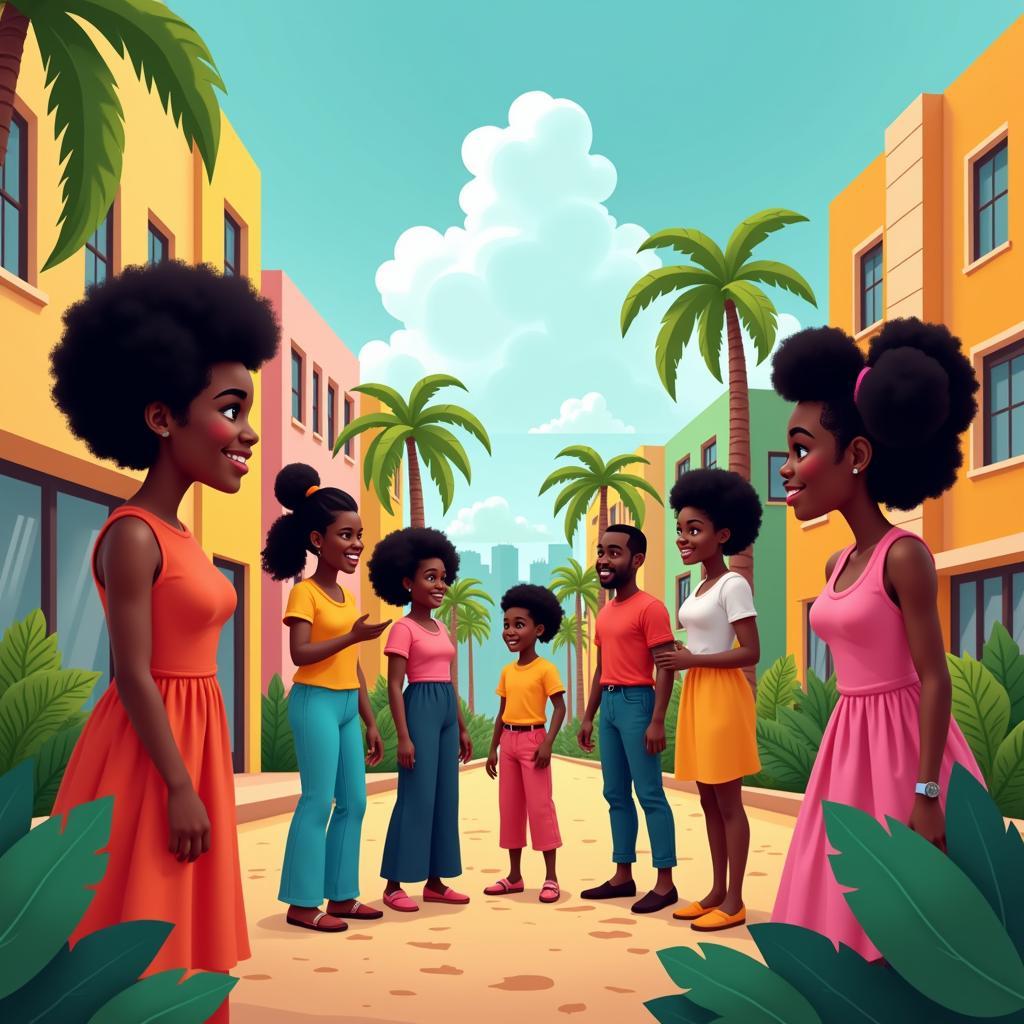African Forest vs Amazon Forest: A Tale of Two Green Giants
The African forest and Amazon forest, two of the world’s largest and most biodiverse ecosystems, are often compared. But what are the key differences and similarities between these green giants? This article delves into the unique characteristics of each forest, exploring their biodiversity, climate, and the challenges they face.
The African rainforest, the second largest in the world, stretches across the Congo Basin and encompasses a diverse range of habitats, from swamp forests to high-altitude montane forests. The Amazon, the largest rainforest on Earth, dominates South America, spanning nine countries and holding an unparalleled array of plant and animal species. While both play crucial roles in regulating global climate and supporting a wealth of life, distinct characteristics set them apart.
Biodiversity: A Wealth of Life in Different Forms
Both forests boast incredible biodiversity, but the types of species and their distribution vary significantly. The Amazon is renowned for its sheer number of plant species, harboring an estimated 40,000 different kinds. The African rainforest, while possessing fewer plant species, is a haven for large mammals, including gorillas, elephants, and okapis. This difference in faunal composition reflects the distinct evolutionary histories and environmental pressures shaping each ecosystem. For example, the African rainforest has experienced more extensive periods of aridification, leading to a higher proportion of savanna-adapted species.
The Amazon, with its consistent humidity and vast river systems, supports a greater abundance of amphibians and reptiles. Furthermore, the Amazon’s isolation for millions of years has allowed for the evolution of unique species found nowhere else on Earth.
Climate: Shaping Two Distinct Worlds
The climates of these two forests differ subtly, influencing the types of life they support. The Amazon experiences a hot and humid climate year-round, with high rainfall. The African rainforest, while also generally humid, experiences more pronounced dry seasons in certain regions. These variations in rainfall patterns influence the vegetation structure and the adaptations of the animals that inhabit each forest. For instance, some African rainforest trees are deciduous, shedding their leaves during the dry season to conserve water, a characteristic less common in the ever-wet Amazon.
What’s more, the Amazon plays a larger role in global climate regulation, producing approximately 20% of the world’s oxygen. This massive oxygen production is a result of its sheer size and dense vegetation. While the African rainforest also contributes significantly to oxygen production and carbon sequestration, its smaller size means its global impact is somewhat less pronounced.
Threats and Conservation: Protecting Our Green Giants
Both the African and Amazon forests face immense pressure from human activities. Deforestation, driven by logging, agriculture, and mining, is a major threat to both ecosystems. In the Amazon, large-scale cattle ranching and soy production are significant drivers of forest loss. While in the African rainforest, logging for timber and land clearing for agriculture are primary concerns.
The African crowned eagle vs harpy eagle is an interesting comparison in the context of these threatened ecosystems. Both are apex predators, highlighting the interconnectedness of the food web within these forests. You can learn more about this intriguing comparison at african crowned eagle vs harpy eagle.
Poaching and the illegal wildlife trade also pose serious threats, particularly in the African rainforest, where elephants and gorillas are targeted for their ivory and bushmeat. Climate change, with its associated changes in rainfall patterns and increased risk of wildfires, presents a growing challenge to both forests.
Looking for an african grey nest box for sale? Supporting ethical breeding practices is crucial for the conservation of these magnificent birds. African grey nest box for sale
Protecting these vital ecosystems requires international cooperation, sustainable land management practices, and increased awareness of their importance. Investing in conservation efforts, supporting local communities, and promoting sustainable alternatives to destructive activities are crucial for ensuring the long-term survival of these magnificent forests.
Conclusion: A Shared Future
The African forest and Amazon forest, while geographically distinct, share a common thread: they are vital components of our planet’s life support system. Understanding their unique characteristics and the challenges they face is essential for developing effective conservation strategies. Protecting these irreplaceable ecosystems is not just about preserving biodiversity, it’s about safeguarding our planet’s future. Let’s work together to ensure the survival of these green giants for generations to come.
FAQ
-
Which forest is bigger, the Amazon or the African rainforest?
The Amazon is the largest rainforest in the world, followed by the African rainforest. -
What are the main threats to these forests?
Deforestation, poaching, climate change, and the illegal wildlife trade are major threats. -
Why are rainforests important?
Rainforests regulate global climate, produce oxygen, and support incredible biodiversity. -
How can I help protect rainforests?
Support conservation organizations, make sustainable choices, and raise awareness. -
What is the difference in biodiversity between the two forests?
The Amazon has greater plant diversity, while the African rainforest is richer in large mammals.
Are you curious about the “african cinema mode samsung”? Find out more about this innovative feature at african cinema mode samsung.
For further information on related topics, explore our articles on the unique challenges faced by specific regions within these forests.
When you need assistance, please contact us via Phone: +255768904061, Email: kaka.mag@gmail.com Or visit our address: Mbarali DC Mawindi, Kangaga, Tanzania. We have a 24/7 customer service team.


